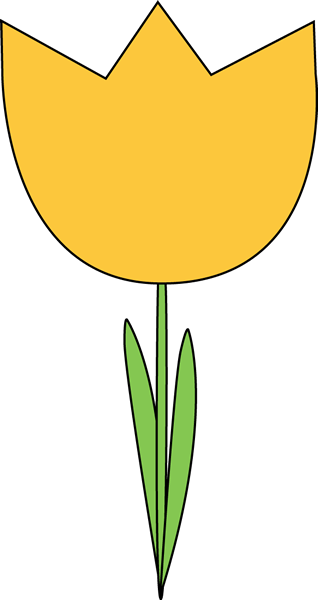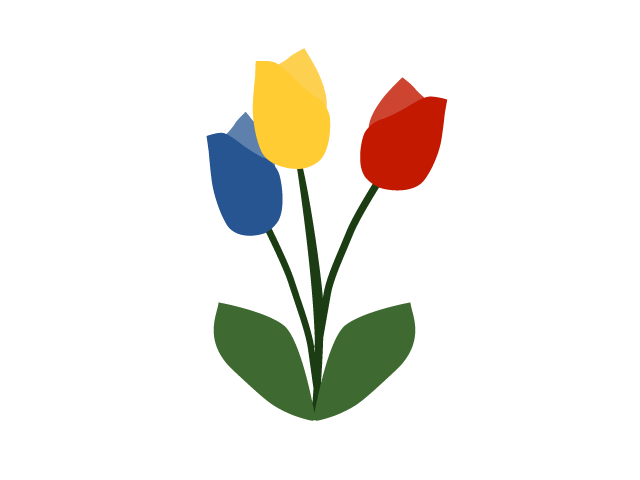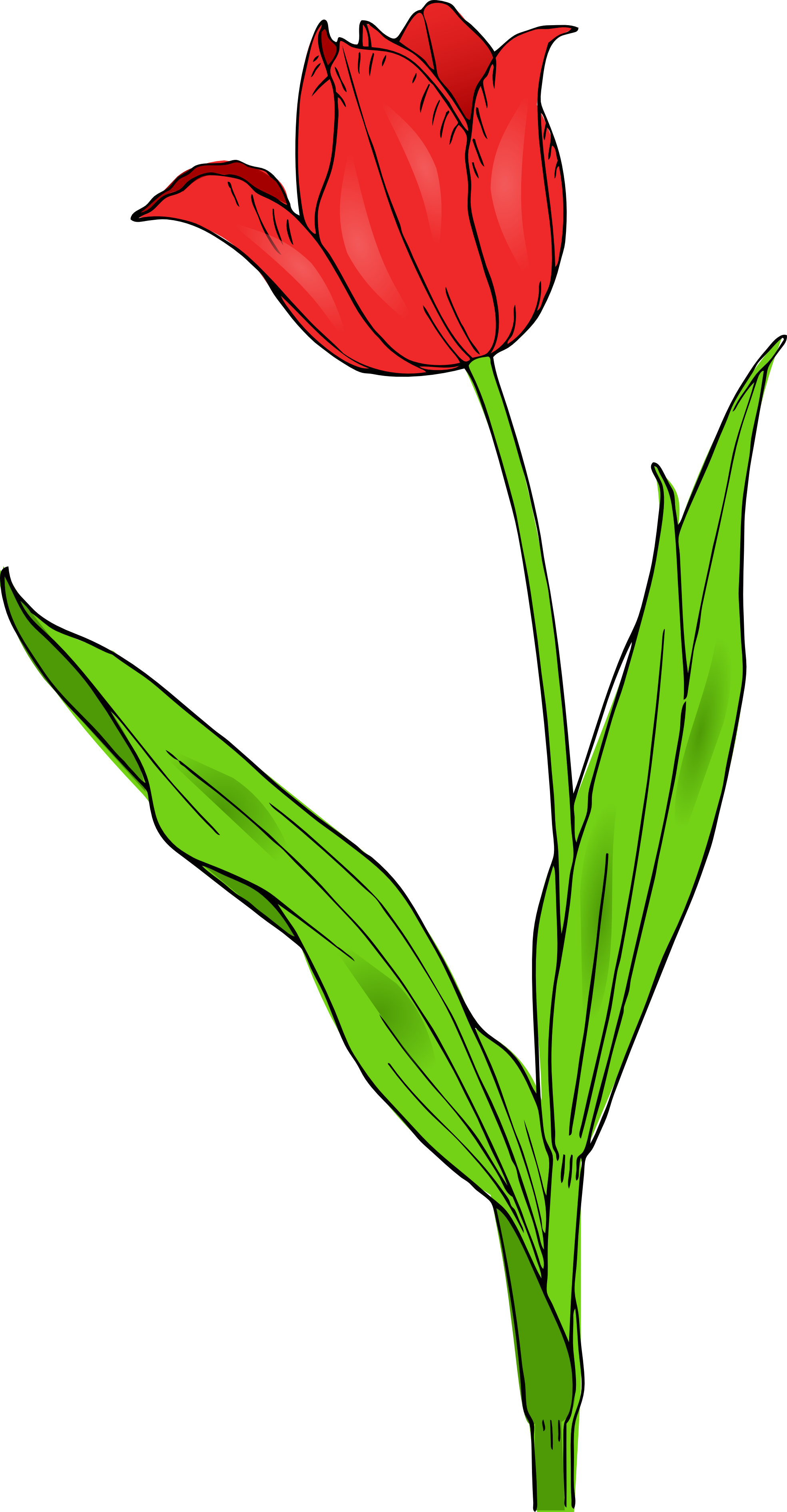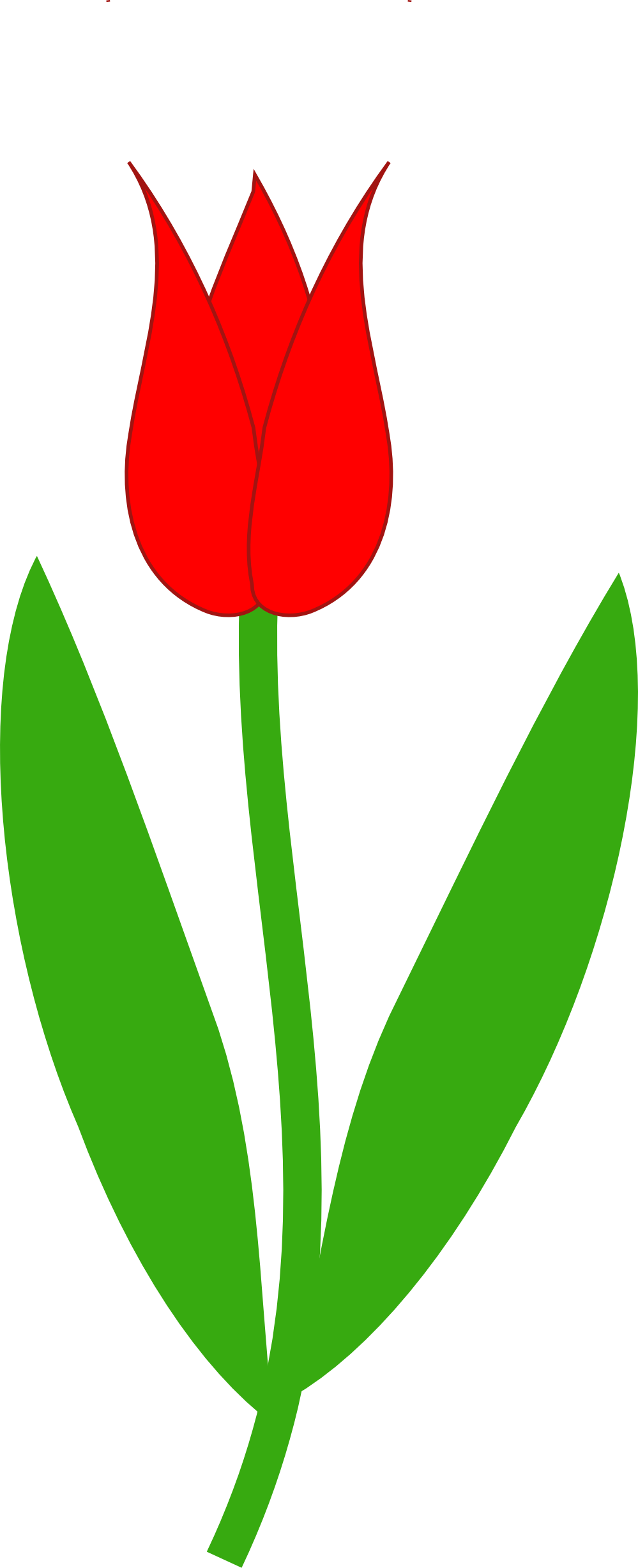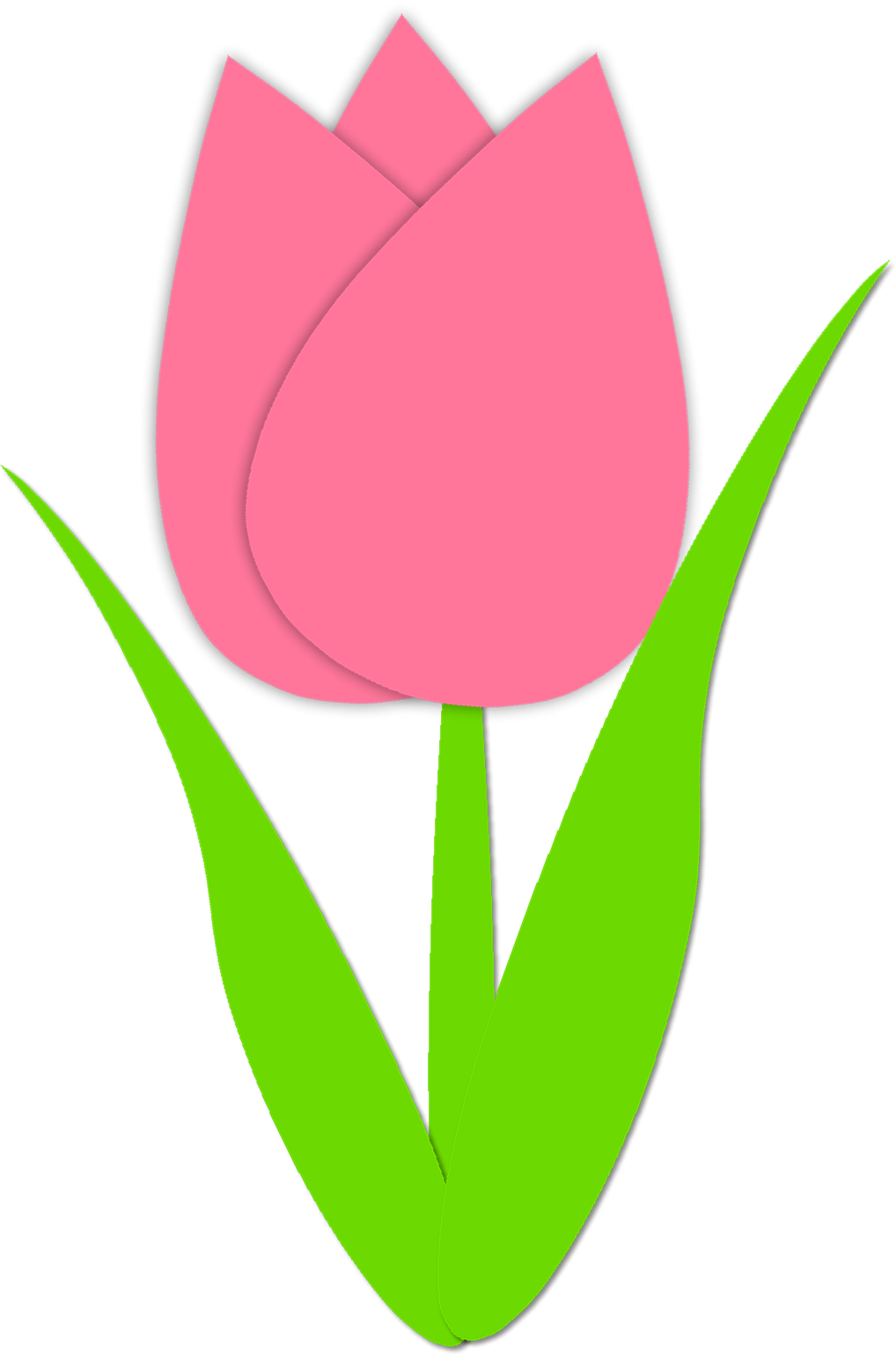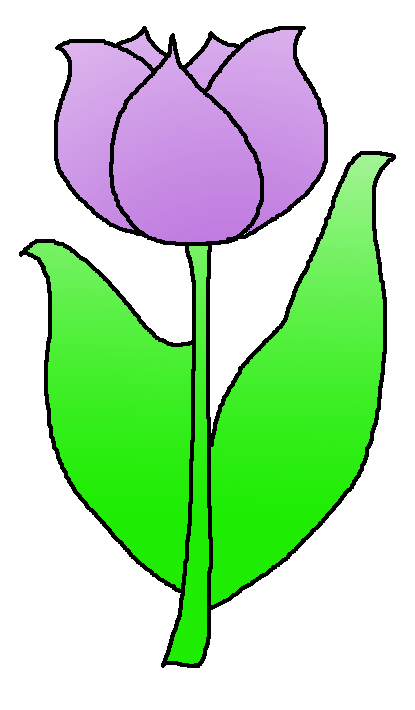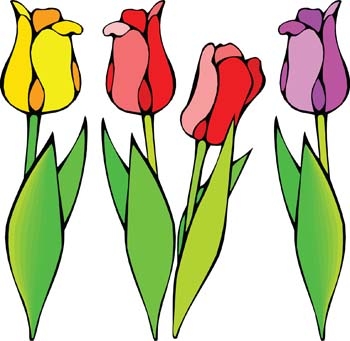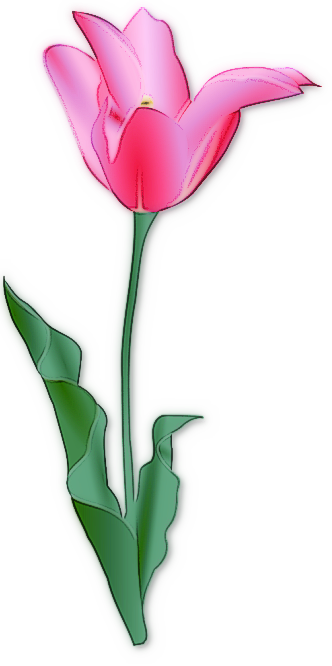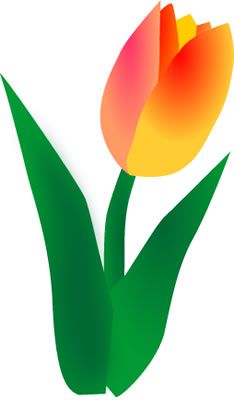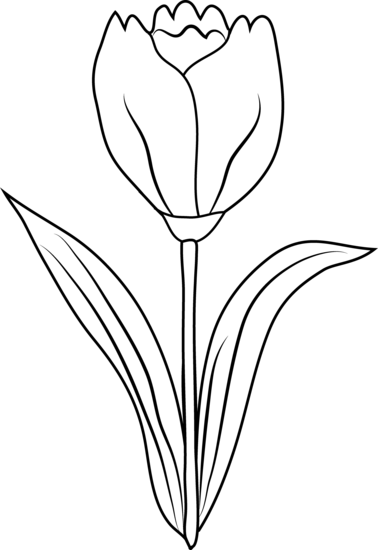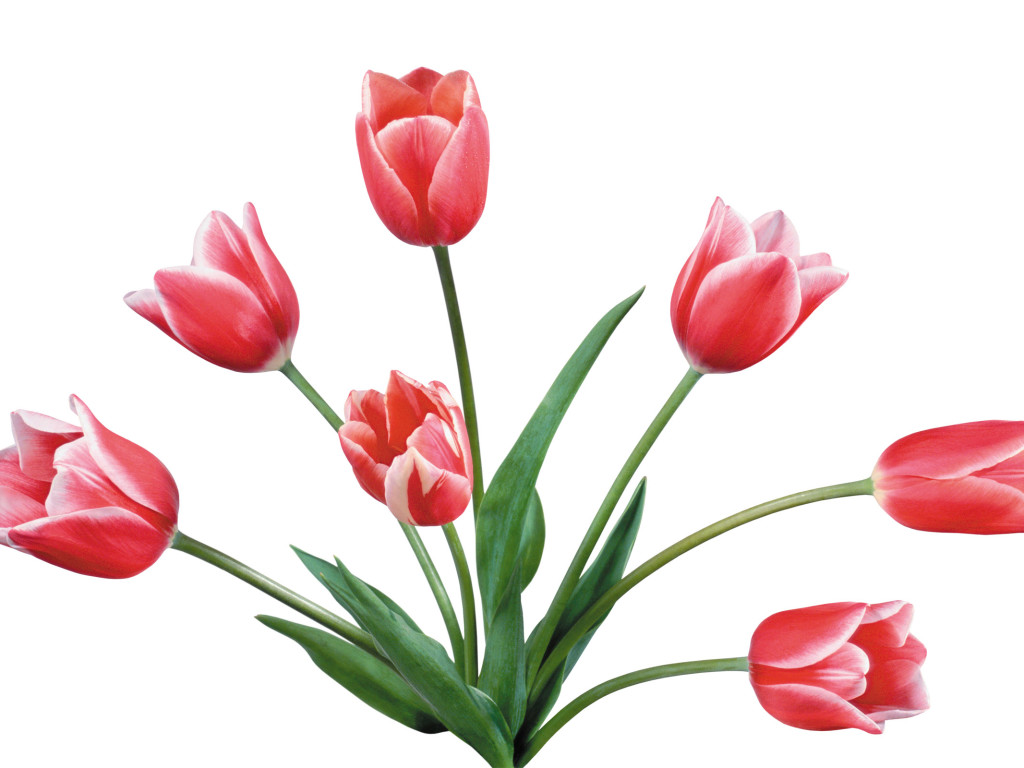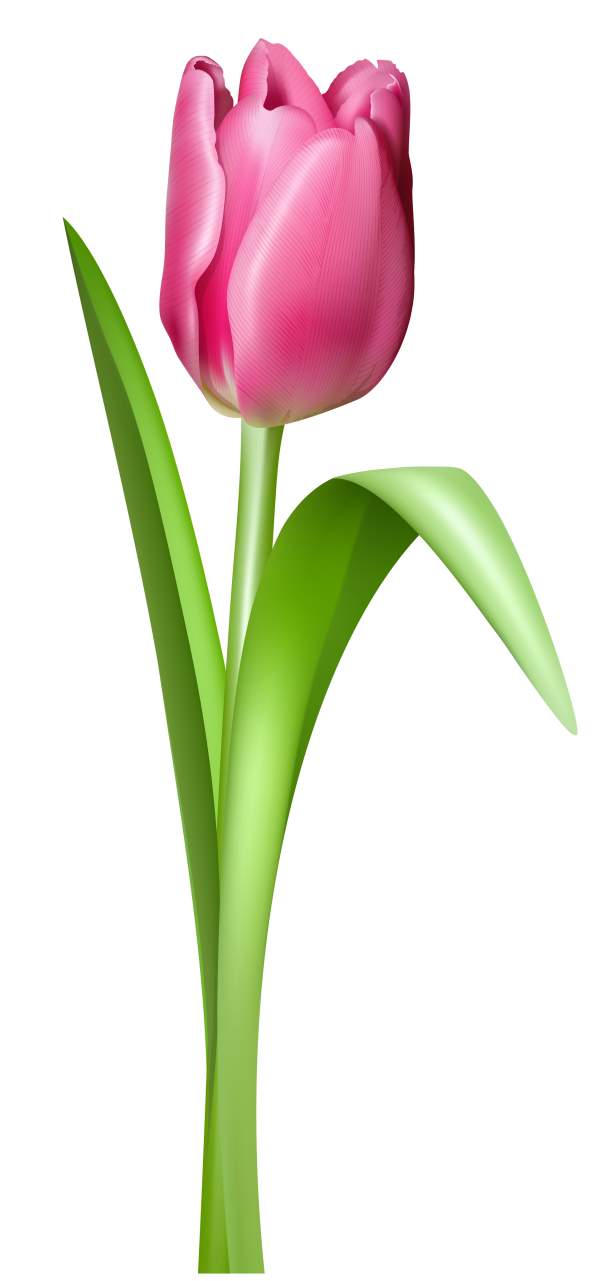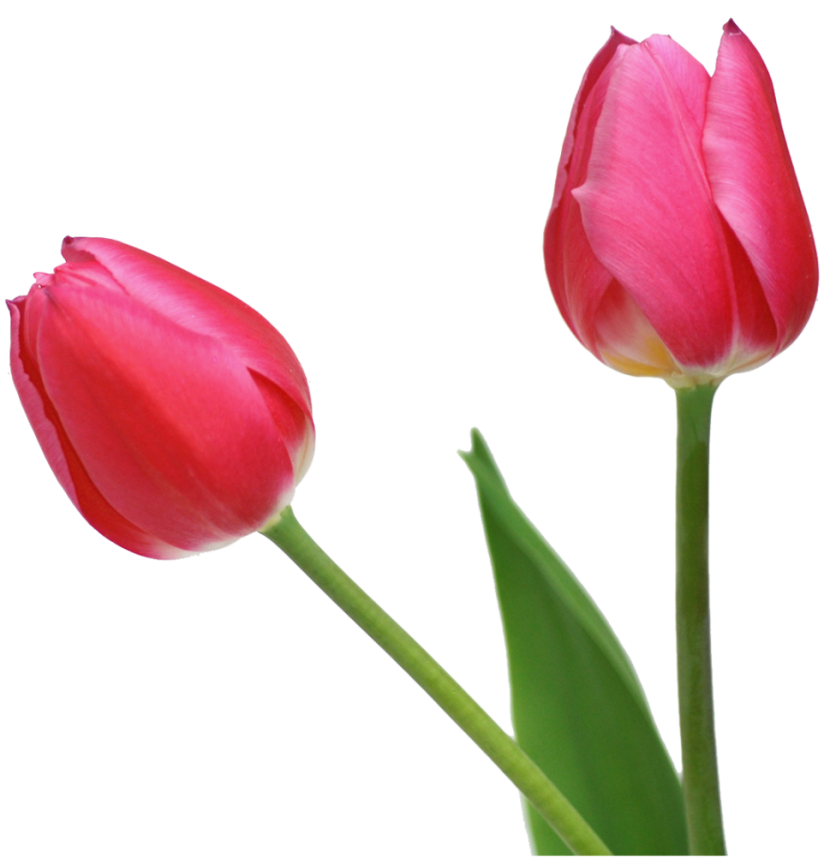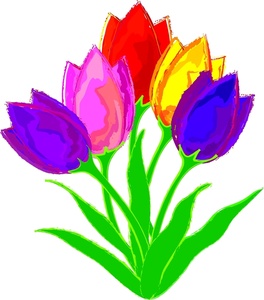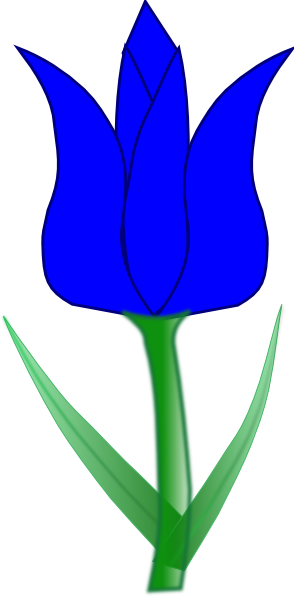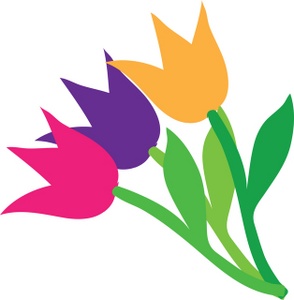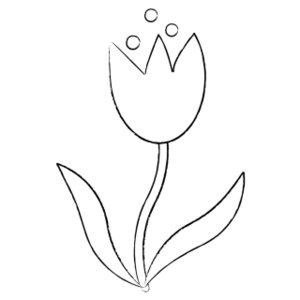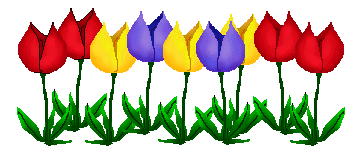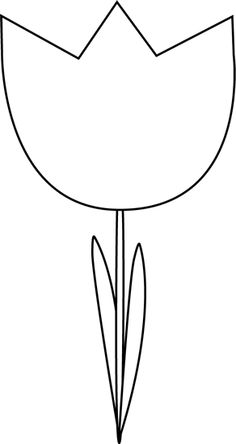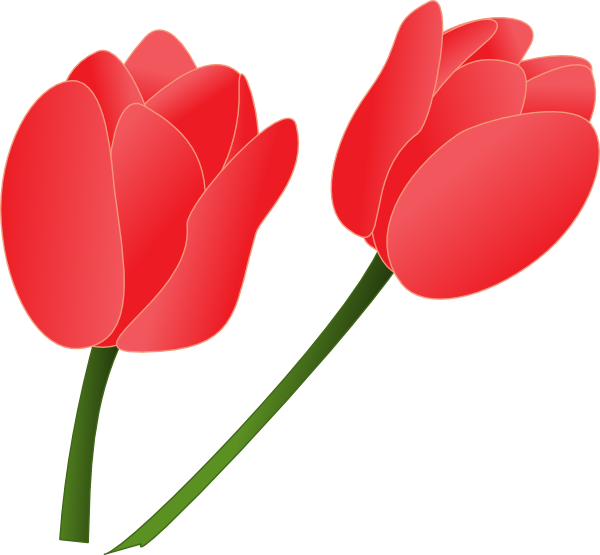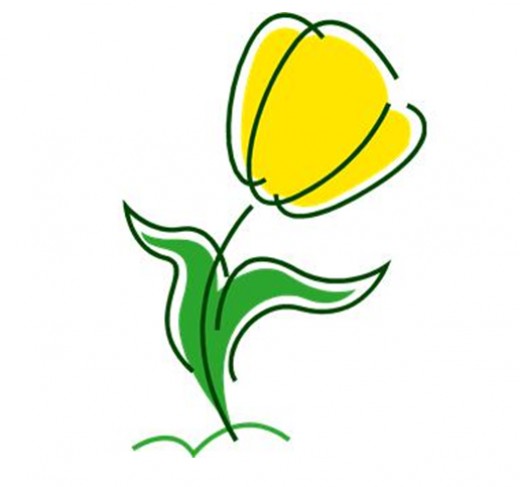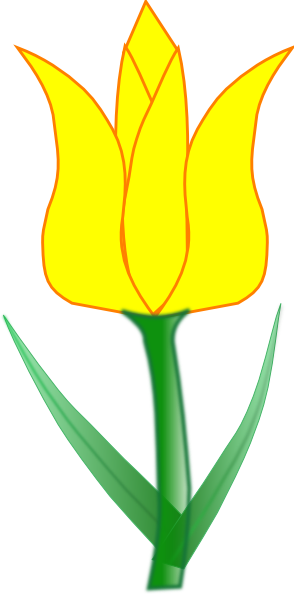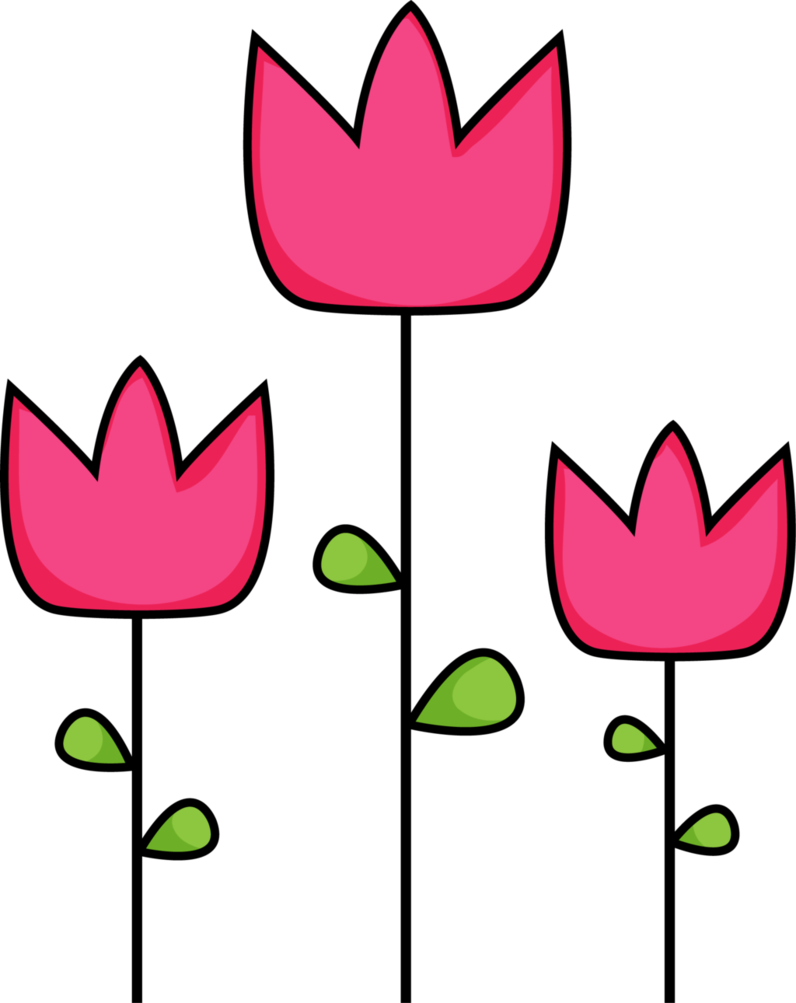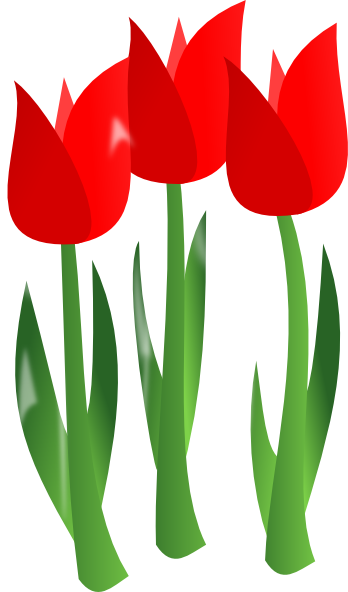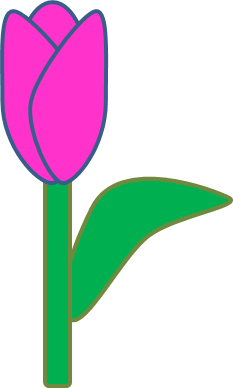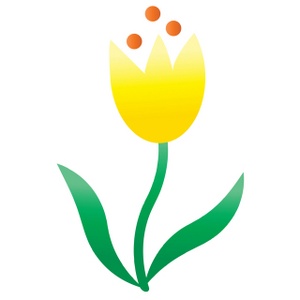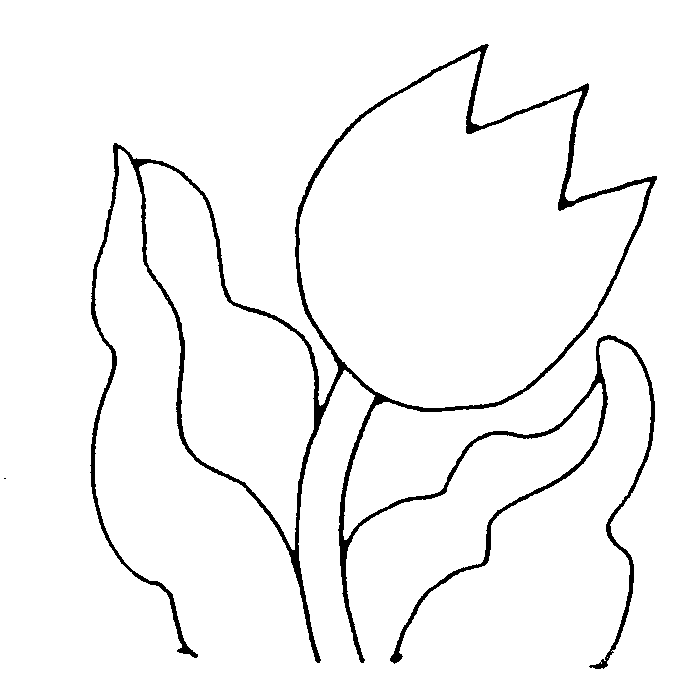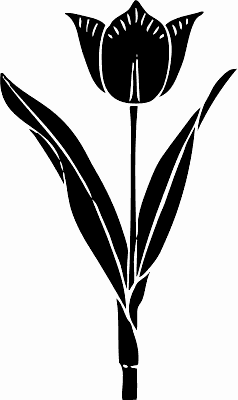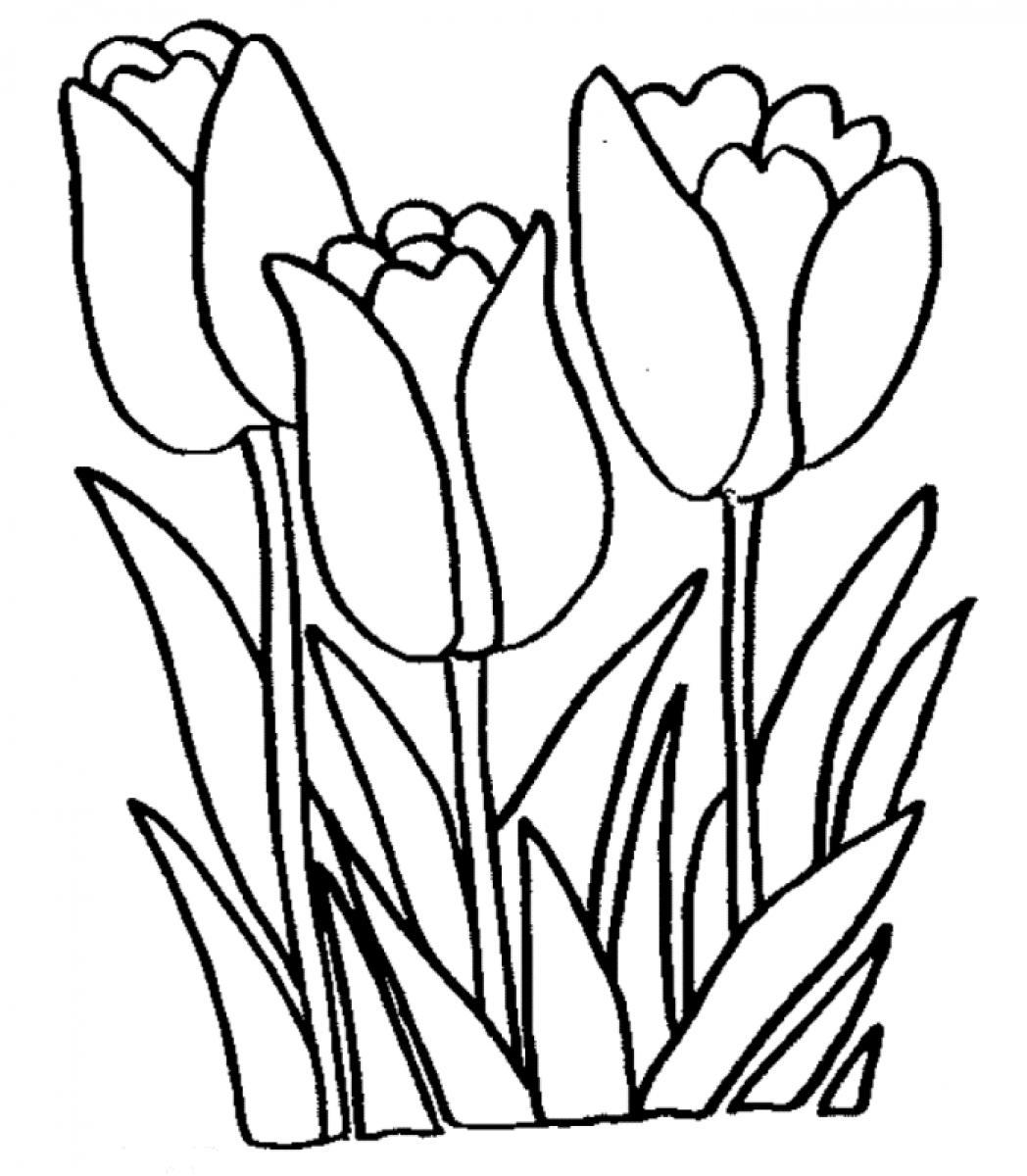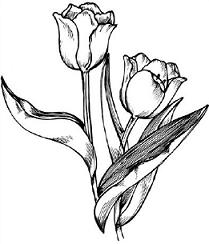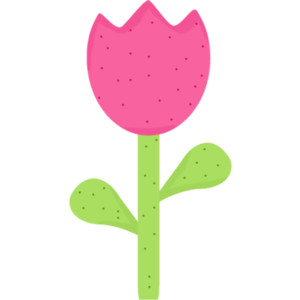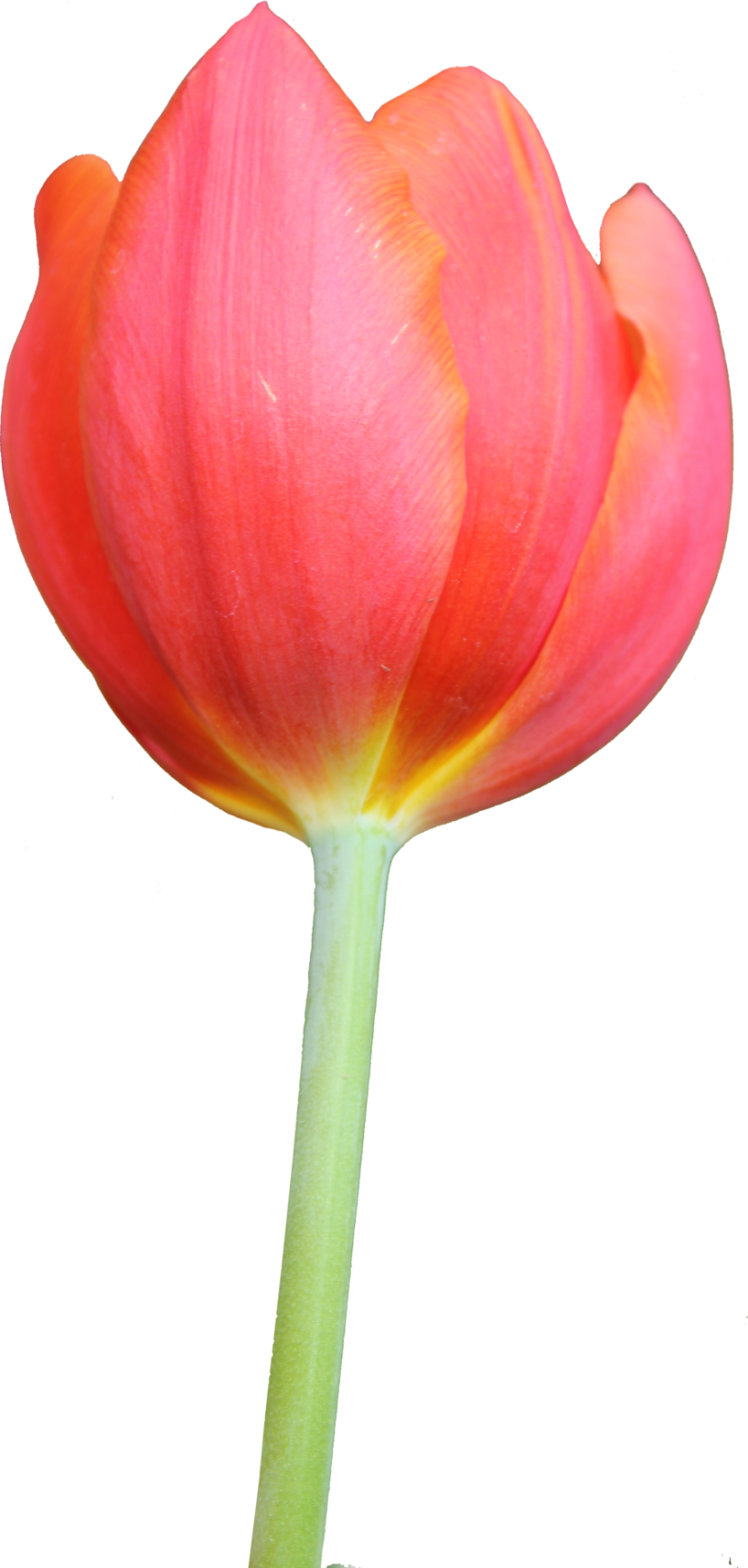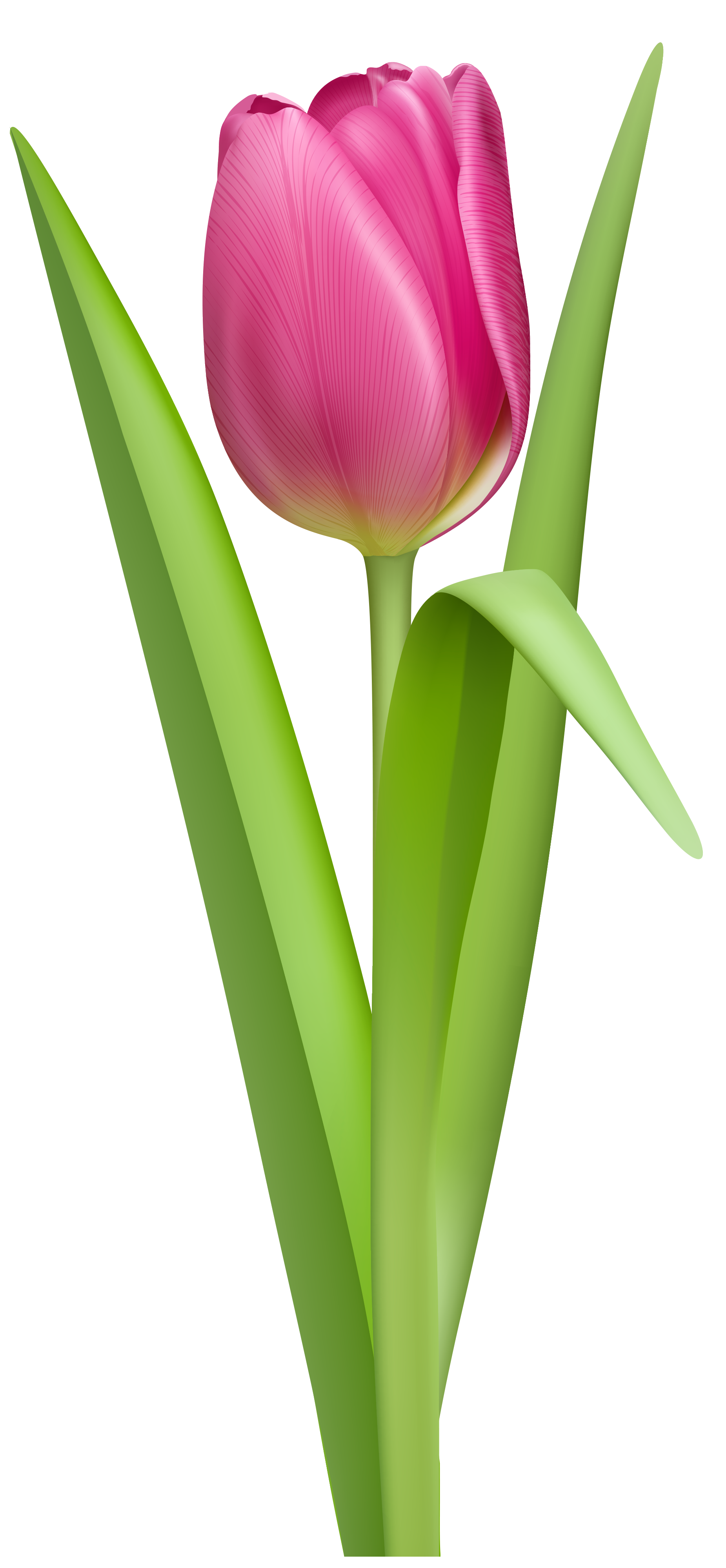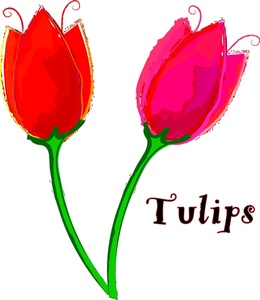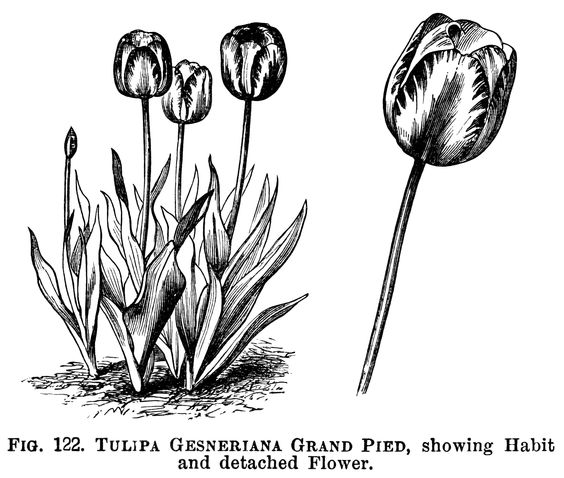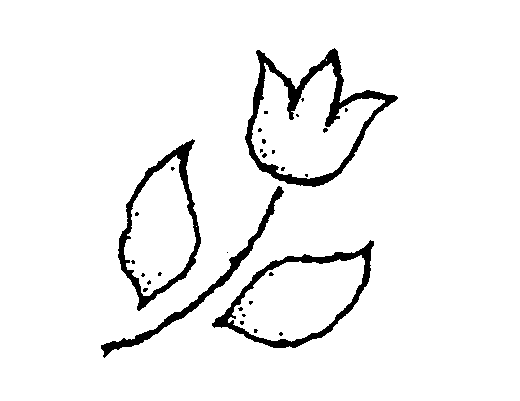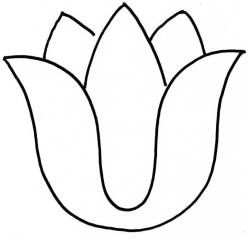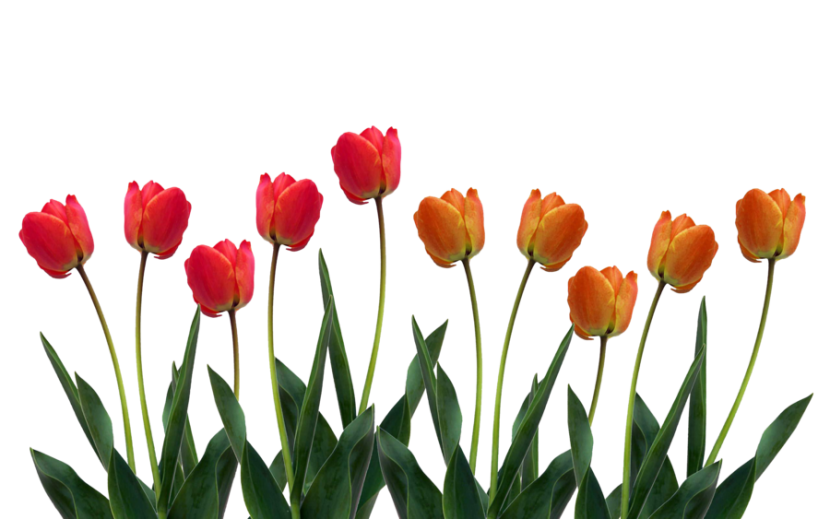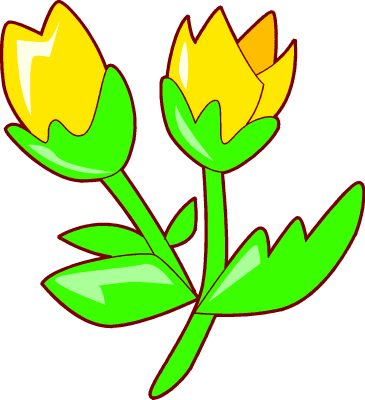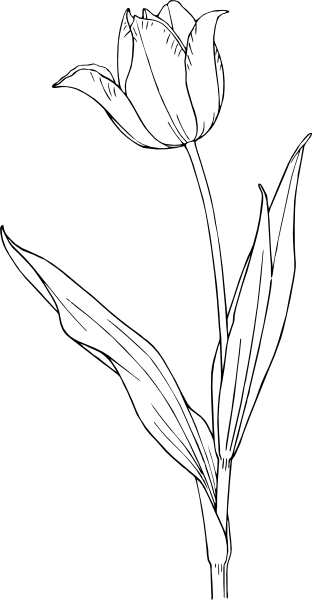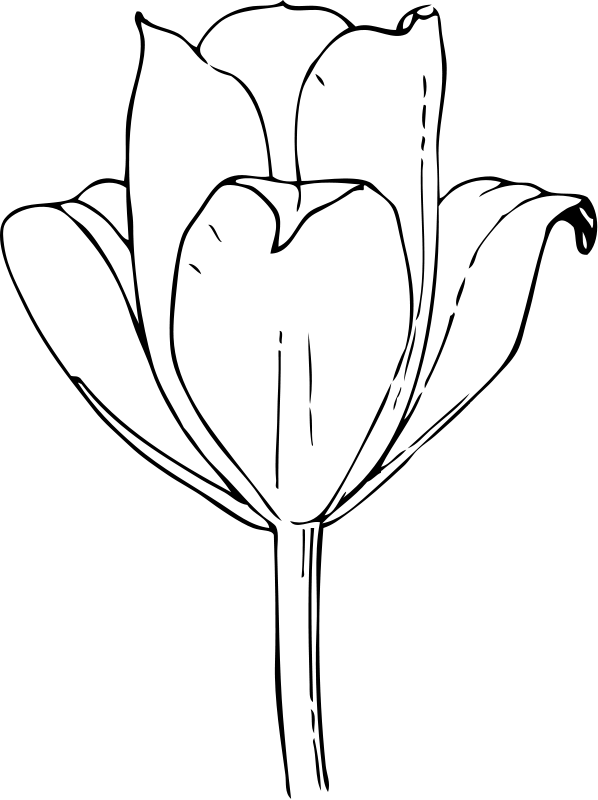Tulip Clip Art
Tulips are a popular spring flower, recognized for their cup-like blooms growing on long stems with glossy leaves. There are over 150 tulip species with a vast array of colors, shapes, sizes and bloom times. These visually appealing flowers originate from Central Asia and became an economically important crop in the Ottoman Empire. Today, tulips grow in gardens worldwide given adequate care.
Types of Tulips
Major tulip classes include:
- Single early tulips: Cup/bowl shaped, grow 4-8 inches wide. Pop up first.
- Double early tulips: Layers of dense, ruffled petals. Showy 16+ inch stems.
- Triumph tulips: Weather resistant, vividly colored 6-8 inch blooms on 16 inch stems.
- Darwin Hybrid tulips: Statuesque 20+ inch stems displaying dazzling oversized blooms in stripes/solids with pointed petals.
- Fringed tulips: Distinct frilly-edged delicate petals. Grows 8-12 inches tall.
- Parrot tulips: Wildly striped, twisted, corrugated petals in bright mixes on 20 inch stems.
- Lily-flowered tulips: Elegantly tapering petals with recurved tips on 16 inch stems resemble lilies.
Tulip Anatomy
Tulip parts include:
- Flower head: Cup/star/bowl-like composite structure of petals and reproductive elements.
- Petals: Colored leaf-like elements forming the floral bloom. May be pointed, ruffled, twisted based on variety.
- Stamens: Pollen-producing male reproductive organ.
- Pistil: Female reproductive organ containing the ovary with ovules.
- Stem: Sturdy straight stalk supporting leaves and flower. Can grow 8 inches to 28 inches tall depending on cultivar.
- Leaves: Alternating waxy strapped-shaped green leaves emerge around stem.
- Bulb: Underground disc-like structure that sprouts roots and sends up shoots.
Tulip Life Cycle
Annual cyclical growth stages:
- Bulb dormancy: Mature bulb becomes inactive from summer’s end until late winter
- Sprouting: Lower temperatures and moisture prompt leaves to emerge from bulb
- Flowering: Blooms open 4-8 weeks after sprouting depending on type
- Seed production: Petals fall 2-3 weeks after peak bloom. Seeds ripen by early summer
- Foliage fade: Leaves yellow and dry up as the mother bulb stops supplying nutrients
- Dormancy restart: Daughter bulbs enter dormancy underground until next growth cycle
Planting Tulips
Considerations for successfully planting tulips:
- Sun: Plant bulbs in locations receiving full sunlight for at least 6 hours.
- Soil: Ensure well-drained fertile soil enriched with compost/aged manure.
- Timing: Best to plant bulbs in early fall before ground freezes so roots become established over winter. Apply fertilizer alongside planting for stronger blooms.
- Depth: Bury bulbs with tip upwards at depths around 4 times their size (roughly 4-8 inches)
- Spacing: Keep bulbs 4-6 inches apart to account for growth.
- Mulching: Cover beds with bark chips/leaves for insulation and moisture retention.
Meanings of Tulip Colors
Tulips convey different sentiments through their vast spectrum of colors:
- Red tulips symbolize love and romance
- Pink tulips represent caring, good wishes
- White tulips indicate virtue and purity
- Purple tulips signify royalty
- Yellow tulips are cheerful harbingers of spring
- Multi-hued tulips with variegations connote beautiful eyes
History and Symbolism of Tulips
- Native Central Asian tulip species were refined by Ottoman Empire gardeners into today’s hybridized forms.
- Introduced to Europe in mid 16th century. Quickly rose into Dutch popularity and economic significance during tulip mania spanning 1634-1637 due to exotic appeal, precipitating a speculative bubble.
- Featured extensively in Dutch Golden Age of painting, cementing status as cultural emblem.
- Represent spring, revival and enduring love across settings from Turkish rugs to modern marketing.
Introduction to Tulip Clipart
Tulip clipart comprises ready-to-use digital vector graphics and illustrations of tulips in bouquets, fields, vases etc. for embellishing communication media. Available in public domain, creative commons and royalty-free libraries.
Types of Tulip Clipart
- Bouquets: Tulips bundled as floral arrangements
- Solitary: Individual tulip drawings
- Fields: Groupings of assorted tulip blooms
- Frames: Tulips bordering page edges
- Outlines: Linear single color tulip contours
Variations depict tulips with assorted colors, shapes, backdrops and embellishments.
Using Tulip Clipart
Tulip clipart can elegantly decorate:
- Marketing materials: Infuse spring vibrancy into posters, brochures, catalogs etc.
- Presentations: Enliven slides and boards
- Cards and publications: Beautify covers, invitations, pages etc.
- Website interface elements: Use as visual accents across sections
- Decorations: Print for displays, bulletins and event art
For best results, resample high resolution files, use judiciously against clean backdrops and add text captions for clarity.
Benefits of Using Tulip Clipart
Tulip graphics offer advantages like:
- Visual Impact: Draws attention with aesthetic flower illustrations
- Brand Building: Helps project fresh, cheerful brand image
- Enhanced Context: Supports communicating symbolic meanings around love, spring, flourishing etc.
- Copyright Friendly: Mostly available under creative commons for commercial application
- Adaptability: Illustrator source files customizable to specific needs
In summary, tulips are multifaceted flowers with an enduring cultural legacy. Tulip graphics help decorate communications and invoke symbolic connotations around revival and enduring bonds. Their vibrant beauty stimulates engagement across mediums.
In this page clipartix present 64 tulip clipart images free for designing activities. Lets download Tulip Clip Art that you want to use for works or personal uses.
